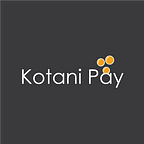Bridging the financial inclusion gender gap through DeFi: Here is the problem
Financial inclusion aims at creating accessible, quality, and affordable financial services for all. Its importance can’t be underestimated as it acts as a big driver of the sustainable development goals(SDGs) enabling nine of the 17 SDGs aimed at transforming the world by 2030.
What do we mean by accessible, quality, and affordable? Accessible answers the questions of availability. The financial services should be geographically close and its tools of reach closer such as mobile phones or local agents. Affordable financial products understand the demographic and financial capabilities of the excluded groups and financial products are customized to suit the financial capabilities of the targeted consumers. Quality financial services look at how responsive and responsible the financial products are in meeting the customer’s needs and financial capacity all while being safe and customer friendly.
How important is financial inclusion to the economy of a country?
Financial exclusion is greatest among poor people, rural households, and emerging developing countries, accounting for more than 70% of global poverty. The result of this is an economic burden to governments as more funds are diverted to supporting the financially excluded rather than developing the Country. In fact, research by EY showed that financial inclusion could improve GDP by up to 14% in more rural, developing economies like India and 30% in frontier markets like Kenya.
When people gain access to affordable financial services, they earn more income, build their assets, manage irregular cash flow, invest in opportunities, and work their way out of poverty. Financial inclusion is crucial in helping people prepare, respond, recover and cushion themselves against external shocks such as global health in this case Covid-19.
Advancing financial inclusion for women is closely related to SDG 1: eliminating poverty, SDG 2: reducing hunger and food security, SDG 3: achieving good health and well-being, SDG 4: Fostering quality education, and SDG 5: promoting gender equality
Here is the problem.
In the pursuit of a financially inclusive world, women, the poor, and those living in rural areas are among the most vulnerable groups excluded from accessing financial services. According to the World Bank, out of the 1.7 billion people across the world who are unbanked, women make up 55% of the unbanked population.
The Global Findex report 2021, notes that the gender gap in account ownership has fallen from 9% to 6%. Despite so, the gap is still there and locking out more women than men. This begs the question, what fuels this persistent gender gap?
- Social dynamics
A study done by UN Women and the World Bank shows that between ages 20 and 34, women are more likely to be poor than men with divorce, separation, and widowhood affecting women more negatively compared to men. The gender dynamics hold women back from accessing financial services and economical inclusion.
2. Access to Mobile phones
Mobile phones have been instrumental in providing financial access but despite so, in sub-Saharan Africa, 80% of men have a mobile phone compared with 69% of women a gender gap of 11 points. That is 200 million males than females cell phone owners. Mobile phones have proven to be an effective way for the excluded groups to access financial services. The lack of mobile phones for this 31% of women further widens the gender gap and locks out more women from accessing convenient digital payment systems.
3. High barriers
Barriers such as high entry barriers to financial services, lack of financial literacy, lack of education, poverty, lack of collateral, time constraints, limited physical access to financial services, socio-cultural constraints ie perception of women as caregivers and not business people, security of funds, restrictive regulatory requirements among others are part of the problem. These challenges are faced by both genders but women are more disproportionately affected and uniquely discriminated against compared to men
Bridging the financial gender gap drives gender equality, economic freedom, and opportunities for all which will overall contribute to the development of a Country. It’s important to note that financial inclusion is a basic right and for us to bridge the gap, we need to fully understand the complexity of the gender divide.
Can DeFi fix this?
Cinch Market conducted a pilot study together with Mercy Corps, Celo, Moolah Market, and Kotani Pay. We discovered that the majority of women than men who accessed the DeFi advances repaid their credit back without defaulting. These funds were mainly used for investment into businesses, to pay school fees, and for the general improvement of their livelihoods. The pilot showed that there is more to gain in financially empowering women by providing equal access to financial services as men.
So, can DeFi fix the gender gap in financial access? It has a big potential in doing so. DeFi is permissionless, immutable, secure, decentralized, open, and transparent, all the features that speak to the barriers to financial inclusion. Users are identified by their wallet address and not their gender or geographical location. Accessing the financial service is unbiased with everyone treated as equal. To access its services, users only need a wallet address and don’t require a credit score to obtain credit as long as they can pose collateral. This gives this Web 3.0 a great edge in bridging the gender gap in comparison to the traditional financial system.
At Kotani Pay, we are committed to ensuring financial inclusion for all by linking your clients to accessible DeFi services. Let’s talk more.
